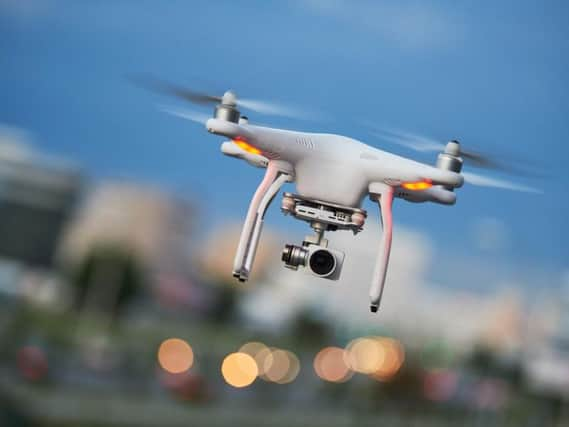Pilot took 'evasive action' to avoid hitting drone over Northamptonshire village


The pilot of the RV6 propeller plane had little time to react as he flew 2,000ft over Byfield in the west of the county in May 2015.
That is according to a report by Airprox, which records all potential near misses between planes and objects.
Advertisement
Hide AdAdvertisement
Hide AdThe pilot was returning to Sywell Aerodrome "saw the drone pass down the left-hand-side of his aircraft 50ft away," reads the report.
"The drone could not be seen on the NATS radars and the operator could not be traced."
When discussing the cause of the near miss the Airprox board agreed that the shop-bought drone was being operated at an altitude 'it should not have been'.
"Although there was no radar data to measure the exact separation, the board thought it was clear from the pilot’s report that this was a fairly close encounter," it continues.
Advertisement
Hide AdAdvertisement
Hide AdDetails of the near miss were obtained through a JPI Media investigation which found there has been more than 300 between drones and aircraft across the UK even before the major disruption seen at Gatwick and Heathrow this winter.
Drone sightings brought 36 hours of chaos to Gatwick Airport in the run-up to Christmas, with runways closed and 1,000 flights affected in what police described as a “deliberate act” of disruption.
Heathrow was also forced to ground flights after drone sightings in early January.
But pilots had begun to report narrowly missing drones in the sky from 2010 onwards, analysis of hundreds of official reports shows.
Advertisement
Hide AdAdvertisement
Hide AdSince the shutdowns, the Government has faced criticism that the events were foreseeable and more should have been done to prevent them.
But the Department for Transport has said there are already laws against such malicious acts.
Aviation Minister, Baroness Sugg, said: “The actions of these drone users were not only irresponsible but illegal. The law could not be clearer that this is a criminal offence and anyone endangering others in this way faces imprisonment.
“Airports have measures in place to counter this threat. The Government is also increasing police powers to clamp down on drone misuse, and extending no-fly zones around airports to ensure our skies are safe.”
Advertisement
Hide AdAdvertisement
Hide AdTwo-thirds of the near-collisions seen in the UK so far involved commercial passenger flights, with drones frequently being flown above regulatory height limits or within restricted airport zones.
But irresponsible drone operators are rarely tracked down, the UK Airprox (Aircraft Proximity) Board documents show.